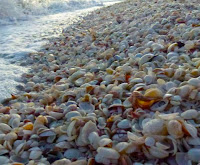I hardly know where to begin so much is written about pearls, from the wonderful imaginative myths of the ancients to the duller pragmatic accounts. I know I prefer to hear that the water that dropped from Venus’ body; as she emerged from the sea, was so affected by her beauty that it formed into Pearls. Slightly more romantic than: When a mollusc is invaded by a parasite or a foreign object that it can't eject, a process known as encystation covers the irritant in successive, concentric layers of nacre; a pearl is eventually formed.
The process of natural pearl formation is so rare that only 1 in 10,000 shells may produce a gem-quality pearl. As the layers of nacre tend to maintain the irregular shape of the original irritant, most natural pearls are irregularly shaped. Natural pearls which are round or spherical in shape are even more rare.
 |
| My cultured pearls - I do have matching earrings - I can't remember where I put them though.... |
Imitation or simulated pearls are entirely manmade. A
bead is dipped into a mixture based on crushed fish scales known as
"essence d’orient". This coats a bead and produces an
imitation pearl. Other lower quality imitations may be made from
plastic or ceramics. These are used for costume jewellery and provide
an inexpensive way of imitating cultured pearls.
In my next blog, identifying "real" pearls, looking after pearls and more about mother of pearl.









